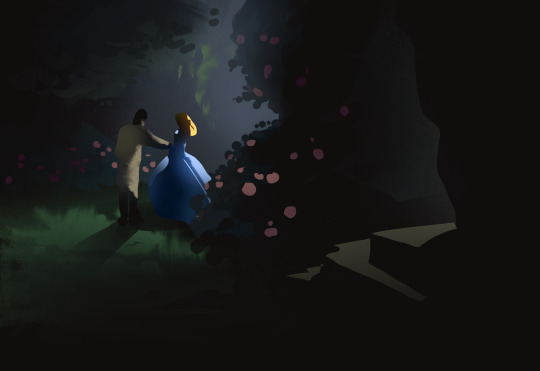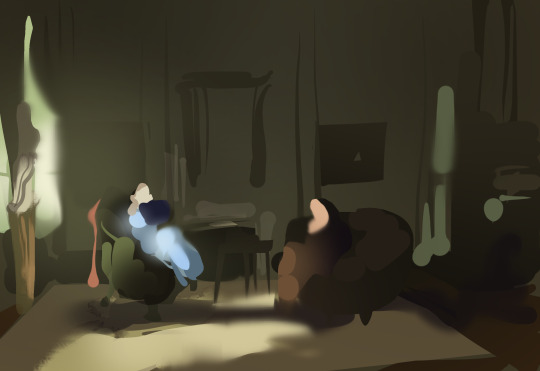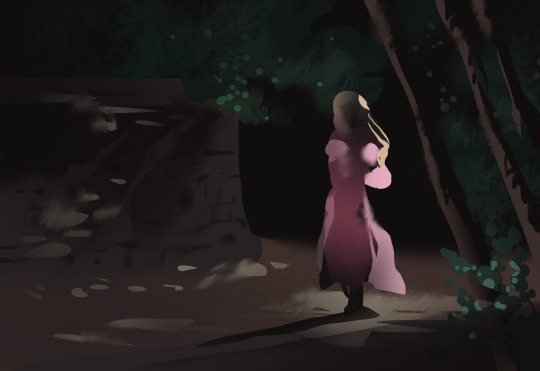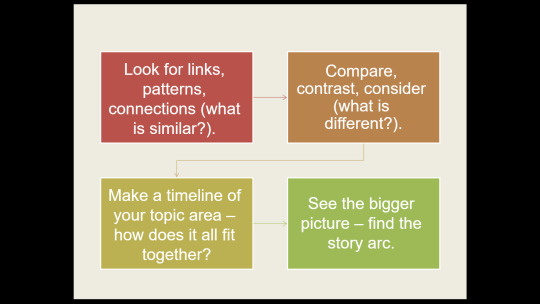Don't wanna be here? Send us removal request.
Text
Cover Letter
Screenskills Your cover letter goes with your CV. You can write your cover letter in the body of your email if you are emailing a potential client. If you applying online, have it as a separate PDF. This is your opportunity to talk to the employer.
The letter should be personal. Use the person’s name. You should adapt your CV and cover letter to each person you send them to. Research the company by referencing recent work or making it clear you know what sort of projects they are involved in.
Try to keep it brief and in three sections. Your reason for writing Your selling points A prompt for further action
Contact the company with enthusiasm and interest in the role without pestering.
Cloth Cat Animation Read the job description carefully. Does it suit your skills and experience? Is it in house only? Try to learn the required software if you don’t already have experience in it. Be open to work in alternative roles. Experience is always valuable. Don’t speak negatively about your education or university.
When writing an email: Write short, succinct emails. Introduce yourself and give a brief summary of your skills and experience. Put most important information at the top. Be professional. If emailing, don’t attach a cover letter; your email acts as this.
NUA Writing a cover letter in response to an advert will be different to a speculative job application. The length and style will vary depending on the employer, the role, the advert and other requirements of the application.
If in response to an advert, you are writing to say you’re appropriate for the role. Everything you need to include will be in the advert. Identify specialist skills and experience. Identify transferable skills and experience.
BlueZoo What should I include in my cover letter? For your cover letter, it doesn’t have to be super long, but keep it enthusiastic, honest and positive!
Try to cover these things: Why are you applying to this studio/role? What skills have you developed that make you right for this role? What experience has made you ready for this role? What about this studio do you like/are interested in?
0 notes
Text
Music Videos
“All Disco” Teaser. Robert Hunter.
vimeo
Style. Muted blues with bright accents. Triadic scheme? No outlines, texture is soft.
https://motionographer.com/quickie/all-disco-animated-teaser/
“Borrowing - Tom Rosenthal” Hannah Jacobs.
vimeo
Music videos are a good example of how we related words and moods into image and how this can work in tandem and how it could affect us if they didn’t match.
https://motionographer.com/2015/11/24/a-tour-of-hannah-jacobs-work/
0 notes
Text
Emotive Videos
“Cocoon” Produced by Dan Stevers.
vimeo
Texture and style. Illustration of the words but more the feeling that is described through the words. https://sarahbethmorgan.com/cocoon https://motionographer.com/quickie/cocoon/ https://www.danstevers.com/
“How the Right Words Help Us to Feel the Right Things” Directed by Antonio Vicentini
vimeo
Continuous colour scheme, loose line work. Words linking with what is seen. Transitions between scenes with a piece morphing into something else. Representative not literal.
http://antoniovicentini.com/words/ https://motionographer.com/quickie/how-the-right-words-help-us-to-feel-the-right-things/
“Dream” Directed by Sofie Lee.
vimeo
A visual poem. Vector style with dark base and bright pastel accents. Surrealistic.
https://motionographer.com/2020/05/21/did-sofie-lee-dream-about-a-motion-award-whos-to-say-but-she-got-one/ https://sofielee.co/dream/
0 notes
Text
Abstract Films
These are examples of more abstracted and experimental animations that tell a story.
The first is “Mind the Gap”. Animated by Katy Wang.
vimeo
This tells of a journey on the London Underground. Use of patterns and images that are commonly seen and sounds commonly heard. I think that part of why this appeals to me is because I’ve grown up in London and this draws out details that I wasn’t aware I knew. The representation and movement works well with the sound and feels appropriate to the experience. I’d be interested to show this to someone who has never been on the underground to see how they react to this.
This next short film is “Art is Theft”. Animated by Daniel Cordero
vimeo
Colour, framing, pattern, creation from seemingly the same shapes and objects.
0 notes
Photo





Pinktofu art - https://pinktofuart.tumblr.com - https://www.instagram.com/pinktofu_art/?hl=es - https://pinktofuart.com - https://twitter.com/pinktofu_art - https://www.behance.net/pinktofuart - https://www.patreon.com/pinktofuart - https://pinktofuart.carrd.co - https://www.redbubble.com/es/people/pinktofuart
8K notes
·
View notes
Text
Explainer Videos
Explainer videos and adverts that use animation can be literal with the images used in relation to the words and sometimes there is a blend of styles.
My first example of this kind of video is for Blend Manifesto, a conference for designers and animators.
vimeo
A continuous style and colour scheme. Based in motion graphics with strong used of simple, shape designs. The focus was on the moving pieces as the colour stand out against the muted and unchanging background.
The next example is an advert for Airbnb.
youtube
This is done in 3D with a set and models. With more stop motion aspects and moving pieces, it is interesting to see how they’ve managed to create different environments and atmospheres and smoothly transition between them. As one of the members in my group is interested in stop motion, I thought it would be valuable to try to find examples that are outside of 2D.
My final example is a short film about politics.
vimeo
This has a overall colour scheme with varying types and styles of animation. It stands out to me that 3D is integrated and makes sense with the other animation styles that are used. Considering the transitions between each section is something that would be useful when it comes to considering how we might approach a good flow with our animation.
https://motionographer.com/2017/03/08/dear-europe/ https://motionographer.com/2015/08/06/blend-manifesto-by-claudio-salas/
0 notes
Text
CNN: Colorscopes 2
“Colorscope is a multi award-winning series exploring our perception of color across cultures one shade at a time.”
Blue eyes don’t really exist. Animated by Moth Collective
vimeo
The colour of darkness. Animated by Matt Abbiss
vimeo
The dark truth behind white. Animated by Jocie Juritz
vimeo
The allure of gold. Directed by Tim Booth
vimeo
https://vimeo.com/channels/colorscope/page:1 https://edition.cnn.com/specials/health/colorscope (The videos can be seen at the link above as can articles about them.)
0 notes
Text
CNN: Colorscopes 1
"Colorscope is a multi award-winning series exploring our perception of color across cultures one shade at a time.“
When life on Earth began, it was purple. Animation by Buck.
vimeo
The two sides of orange; immortal yet toxic. Animation by Emmanuelle Walker, Nexus Studios.
vimeo
Think pink! Animation by Giant Ant.
vimeo
They call it mellow yellow, more like happy yellow. Animated by Sebastianbap
vimeo
What it really means to see green. Animated by Jorge R. Canedo E.
vimeo
https://edition.cnn.com/specials/health/colorscope (”Why red turns us on.” can be seen at the link above as can the rest of the videos and articles about them.) https://vimeo.com/channels/colorscope/page:1
0 notes
Text
Personal Profile
This is a short summary of you for a potential employer. Most important part of the CV. Place it at the top. Can use it as an opener in a cover letter. It can make you be memorable, interesting, and create a connection with the reader. Can be used in a social media bio, at networking events, CV profile, possible cover letters, job interviews.
Short and to the point. “I am...” I am an (aspiring) animator/artist...
Write down 5 things you can do. Specialist skills. Transferable skills. Drawing, painting. Colour theory. Observation, patience. Collaboration. TVPaint, audio/video editing. Writing, editing, research. Problem solving.
Write down 5 things you are interested in. Practice and research interests (x3-4) - Social and Cultural. - Stylistic and Aesthetic. - Thematic or Issues (social, political, cultural). Outside interests (x1-2)
Interest in science and psychology. The way people relate to things and emotion. Animation as a Fine Art - What it can be outside of film. Interactive animation. Reading and storytelling. Culture(?)
Top skills and interests. Pick two from each column - strongest skills and your main interests. How did you develop each skill/interest? eg. - Drawing skills. Background studying fine art. - Photoshop skills. Photography hobby. - Interest in international development. Trips to Peru and South Africa when I was 18. - Interest in music. Playing guitar in a band.
Colour theory and experience/practice in a range of specialisms and design - Background studying art and design. Creating art for Dementia patients. Observation and patience - Fine art practices and art and design. Interest in science and psychology. The human condition. - Favourite subject in school and personal experiences with mental health. Reading and Storytelling - reading a lot throughout youth.
Write a 2-3 sentence paragraph summing up your skills and interests. Create connections between your skills and interests.
0 notes
Text
CV Design
Focusing on creative CVs. Recruiters and some large businesses use Applicant Tracking Software (ATS). One function is to scan CVs for keywords. Some graphic elements and formatting features may not be compatible. Keep this in mind when adapting your CV. May be a good idea to have more than one CV; one being ATS compatible.
Fonts Best: Sans-serif fonts. eg. Arial, Verdana, Helvetica. OK: Serif for titles. eg. Cambria, Garamond Avoid: Default fonts. eg. Calibri, Times New Roman. Forbidden: Overstylised fonts. eg. Comic Sans, Impact, Brush Script.
Don’t use more than two fonts on your CV.
Being aware of title design and using this to add to the creativity and overall appearance.
Having a photo or not depends on where you are applying for a job. Not a necessity in UK, Ireland, Canada and USA but you should in China, Japan, and most European countries.
0 notes
Text
CV Content
A CV is an overview of your skills, experience and education. Needed for job application. Focus here is on creative industries. Needs to be clear, make a strong impression, emphasise key skills and achievements. Tailored to the role you are applying for.
Name + Contact Full name, phone number and email address as minimum. Make sure contact details are professional. You can also use links to LinkedIn if they highlight your work.
Introduction Explain who you are and why you’re suitable. Summarise the kind of worker you are and what environment you are looking to join. Emphasise skills that are most relevant to the job description.
Education Your education and qualifications in reverse chronological order including current. Qualification, Grade, Where and When it was received. Think formatting. Easy readable and consistent.
Employment/Experience Summary of past employment, work experience, placements, internships or volunteering that might be relevant to the position. Mention your role, when and where you have worked and a brief summary of responsibilities. Emphasise relevant skills for the job you’re applying for in the description of your responsibilities.
Extras If relevant to the job you’re applying for you can include: Personal profile Voluntary work, extra-curricular activities. Skills Credit list (for film/TV), exhibition list (for an artist CV) Awards, competitions etc. References Interests/Hobbies.
0 notes
Photo



I love the look of the 2015 Cinderella. Here are some movie still studies.
2K notes
·
View notes
Text
Writing the Background
Writing the background: critical thinking, critical reading.
The background is a summary of relevant information within your area. Need to think critically as you conduct research.
Critical thinking means actively engaging with new information. - Don’t just regurgitate facts. - Use judgement to select and interpret sources. - Be thorough - watch out for the ‘makes sense stopping rule’
When research goes bad: You take too many notes, you feel you’re not getting anywhere, you start to panic.
Instead: Relax! Just read, watch, or listen. What are the ‘big ideas’? Make notes in a way that suits you.
Sketchnoting is a good way to take notes while improving focus, identifying key point and organising notes in a non-liner way. Studies suggest that we are best at remembering when we activate visual memory. Background should become easier to write and will focus on the big ideas in your topic area.

Speed-reading Skim read for keywords. Read the first sentence of a paragraph: the topic is usually stated there. Read the blurb or the abstract.
Research checklist Have you done enough research? Have you avoided confirmation bias? Have you sought opposing views.
Beware of Black swans “ The essayist and scholar Nassim Nicholas Taleb came up with the ‘black swan theory’ – black swans are events or inventions which are completely unpredictable, but when they come along they change the world (and afterwards it is impossible to imagine them not existing). He gives examples of the computer and cultural phenomena like Harry Potter. Taleb refers to a saying in mediaeval England that ‘you’d sooner see a black swan’. This means something like ‘when pigs fly’. But when Europeans first visited Australia and saw that black swans actually did exist, the phrase fell out of use In the context of your research you must be thorough enough that you do not miss a black swan! If your entire argument is predicated on the fact that all swans are white, you will look a fool if someone points out to you that black swans exist “ This was taken straight off the powerpoint.
Be aware of confirmation bias The tendency to accept ideas that agree with our pre-existing beliefs, prejudices and viewpoints. Downplays ideas and information that contradict them. Rationality.
Recognise good arguments even if we disagree.
Writing a research question Your question/title should include: Question word or instruction. Topic area of your research Specific focus of your research
The 2-page technique Page 1 - Everything you already know about this topic. Page 2 - Everything you need to find out and possible methods for doing so. (Useful for research methods.)
As your research develops information will move from page 2 to 1. Cross out what you have discovered and add anything new that comes up.
2 notes
·
View notes
Text
Tutorial w/Lynsey
500 Words. Use the template. Most practical to go into - Animation in Galleries. You can draw on previous research but not copying - this is still plagarism. Leaflets, photos, videos from an exhibition. Did I write the review on this? - Make sure you know what write ups you did so you can avoid copying.
History. Theory. Concepts. - Extended Essay. Traditional Conceptual. An industry report is more practical in the industry sense. Interviews.
Chat to Peter - Fine Art background. His opinion and knowledge will be helpful.
Lynsey Animation as ‘moving fine art’ has a rich tradition on film (if not in galleries) so there would be lots to look into for your ‘background’ i.e. history/context. Maureen Furniss has a good book on animation as art (some of her stuff may be available as ebooks via the library page on the VLE). You could look into the work of Norman McLaren, Len Lye, Oskar Fischinger etc, as well as contemporary animators/artists.
2 notes
·
View notes
Text
Revised Assessment Criteria
Due to COVID-19. University closed for the rest of the academic year, teaching online and assessments have been revised.
Important to note: Developmental work as opposed to refined outcomes. LO10 - Redundant so not assessed. PASS/FAIL - There will be no percentage. Strengths and areas for development will still be assessed and given as feedback. Resubmission opportunities applied as usual.
To progress to Year 3, pass all units. 120 credits. Overall grade for Degree is now based solely on Year 3. Two extra weeks for submission and granted Extenuating Circumstances.
Submission date: 29th May 2020
0 notes
Text
Referencing for your Dissertation
Be aware of plagiarism when you write. It’s easy to do accidentally.
Bibliography List of all sources cited throughout your piece of writing. Harvard referencing layout. Zotero could be useful.
Book: Author’s surname, Initial. (Year) Title. Place of Pulication: Publisher.
Website: Author’s surname, Initial (Year web article or page posted) Title of web article or page. Available at: URL of web page (Accessed: date you looked at web page).
Citations Appear within your writing. Harvard referencing layout. The citation is so the reader can look up the source in the bibliography. The layout will follow the corresponding source in your bibliography.
Book: (Author’s surname, Year) adding the page number within the parentheses if a specific page is cited.
Paraphrasing and Summarising It’s good to use your own words instead of lots of quotes. In-text citations are still needed. Paraphrasing - putting something into your own words. Summarising - condensing an article or chapter into your own words.
Secondary Referencing Citing/referencing a work that has been mentioned or quoted in the work you are reading. eg. Harvey (2015, quoted in Lewis, 2016, p.86) provides an excellent survey... Only Lewis’ 2016 book would appear in your bibliography because you haven’t read Harvey’s book.
2 notes
·
View notes
